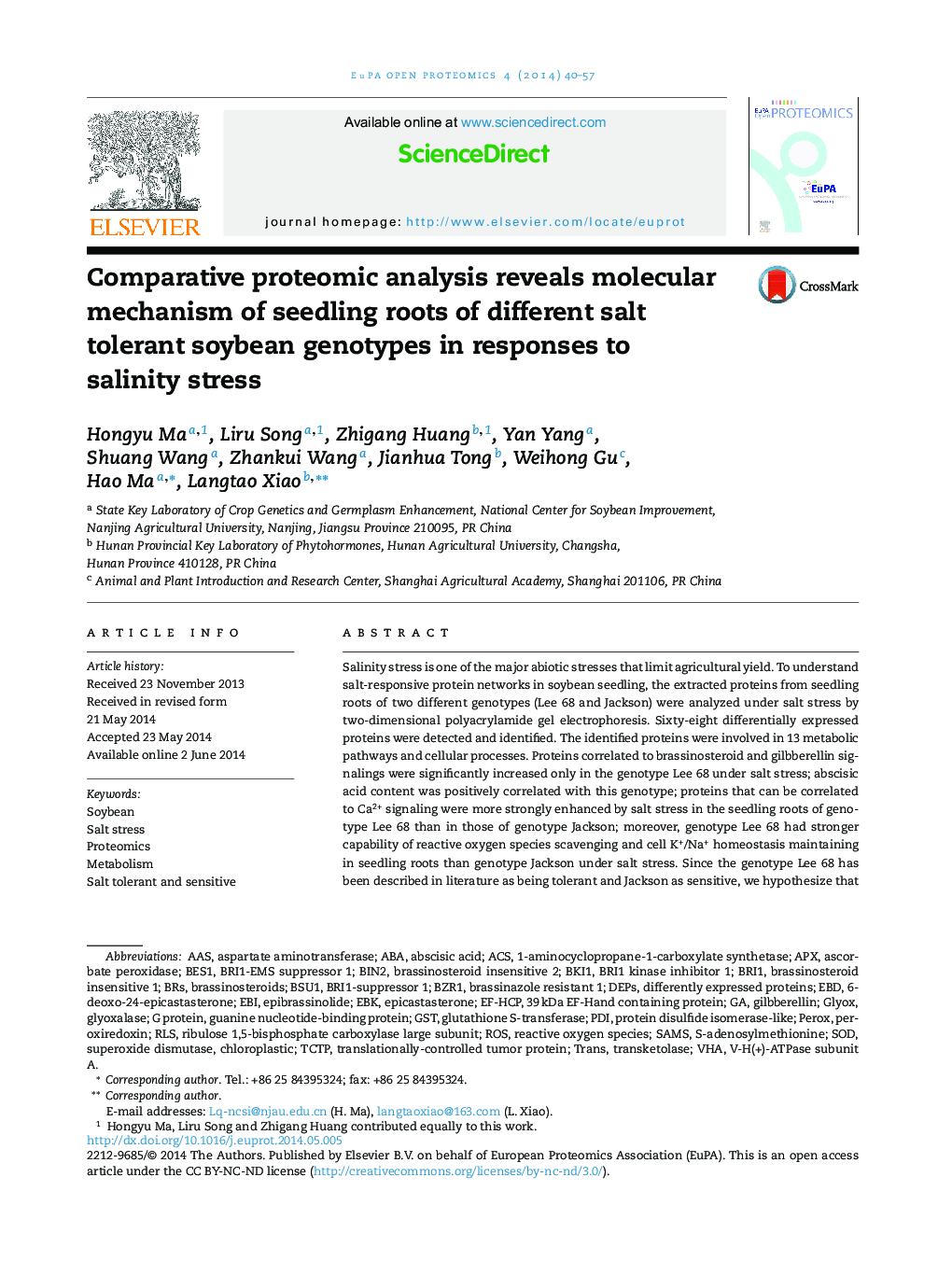| Article ID | Journal | Published Year | Pages | File Type |
|---|---|---|---|---|
| 1183630 | EuPA Open Proteomics | 2014 | 18 Pages |
•68 proteins were identified by 2-DE coupled with MS/MS in soybean seedling roots.•BR and GA signalings were enhanced only in the seedling roots of genotype Lee 68.•ABA contents was positively correlated with salt tolerance.•Ca2+ signaling in seedling roots was enhanced in Lee 68 than in Jackson.•Lee 68 had more ROS scavenging and cell K+/Na+ homeostasis maintaining than Jackson.
Salinity stress is one of the major abiotic stresses that limit agricultural yield. To understand salt-responsive protein networks in soybean seedling, the extracted proteins from seedling roots of two different genotypes (Lee 68 and Jackson) were analyzed under salt stress by two-dimensional polyacrylamide gel electrophoresis. Sixty-eight differentially expressed proteins were detected and identified. The identified proteins were involved in 13 metabolic pathways and cellular processes. Proteins correlated to brassinosteroid and gilbberellin signalings were significantly increased only in the genotype Lee 68 under salt stress; abscisic acid content was positively correlated with this genotype; proteins that can be correlated to Ca2+ signaling were more strongly enhanced by salt stress in the seedling roots of genotype Lee 68 than in those of genotype Jackson; moreover, genotype Lee 68 had stronger capability of reactive oxygen species scavenging and cell K+/Na+ homeostasis maintaining in seedling roots than genotype Jackson under salt stress. Since the genotype Lee 68 has been described in literature as being tolerant and Jackson as sensitive, we hypothesize that these major differences in the genotype Lee 68 might contribute to salt tolerance. Combined with our previous comparative proteomics analysis on seedling leaves, the similarities and differences between the salt-responsive protein networks found in the seedling leaves and roots of both the genotypes were discussed. Such a result will be helpful in breeding of salt-tolerant soybean cultivars.
Graphical abstractFigure optionsDownload full-size imageDownload as PowerPoint slide
